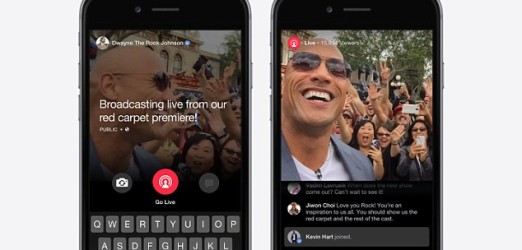Engaging relevant audiences, driving interest and influencing key stakeholders, these are just some of the benefits of live streaming as part of a broadcast PR campaign.
In the last year there’s been a big change in the world of PR video, in terms of live streaming. It’s not a new tool, but what’s changed is the cost: it has come down considerably, so much so that you’d be missing a trick if you didn’t at least consider it for part of every broadcast PR campaign.
So why is streaming popular?
Recent video trends suggest that audiences are looking to interact with video content more than ever before. Just look at how popular virtual and augmented reality is at the moment, (I am looking at you Pokemon hunters!).
Ultimately live streaming drives interest to a campaign, its immediacy making viewers feel they are part of the moment and getting a special or exclusive insight into a product or event. So a brand could give their followers some behind the scenes content or an event or product launch; alternatively, they might show an interview with a celebrity or just some interesting footage. Anything that makes their followers feel in the know.
Some of the most successful uses of this way of live streaming is when brands will give their followers some behind the scenes content of an event or product launch. This could be a quick interview with a celeb or just some interesting footage. Anything that makes their followers feel in the know!
If you are able to integrate live video with a social media campaign the audience will engage with it on a different level than a standard video, for example tweeting questions and comments while the live stream is going on. Live streaming also offers the ultimate in convenience – the world is your oyster in terms of audience reach because anyone, anywhere, with an internet connection can access it.
A few years ago live streaming was relatively expensive, however with social media platforms such as Facebook, YouTube and Twitter actively promoting live streaming combined with advances in smartphone tech, costs have been slashed.
Here are a few different ways of live streaming, to suit every budget and outcome.
Option 1: Free!
Everyone who owns a smartphone has the ability to livestream. Using your phone’s camera and free apps like Facebook or Periscope, users are able to broadcast to the world in a few taps of your screen.
This is a quick, convenient and cost effective way of live streaming, but the production value is low. For a glossier, more professional feel there are other options:
Option 2: From £1, 000
This is the next step up and involves a professional camera crew – so the overall video will look slicker. Footage is streamed via a video encoder to YouTube or similar. You only have one camera (a multi camera shoot and a mixing desk will not work at this basic level) which means you only have the one shot but it’s a good compromise of budget and quality.
Another benefit to this option, over the free social media method, is that you can record for longer. As you are recording on professional cameras, you are also able to simultaneously record what you are streaming to a memory card. This means you can put the whole recording on a website to be watched forever, or take clips for social media.
Option 3: £2000 plus
At the top end of the price scale would be an outside broadcast involving multi cameras and a mixing desk. Changing shot makes the output a lot more interesting for the audience. This sort of production is more akin to a television programme. The expense is greater but the outcome is more professional and perhaps better suited for more corporate audiences.
For example, I was on the team at Shout! Communications when the agency supported P & O Cruises for their latest ship launch, Britannia. This included live streaming footage of the naming ceremony to the company’s fleet of ships, wherever they were around the world. Most were at sea so we used a satellite truck for streaming.
The options for live streaming are now many, one to suit every budget. It’s a trend, I predict, that can only grow.



